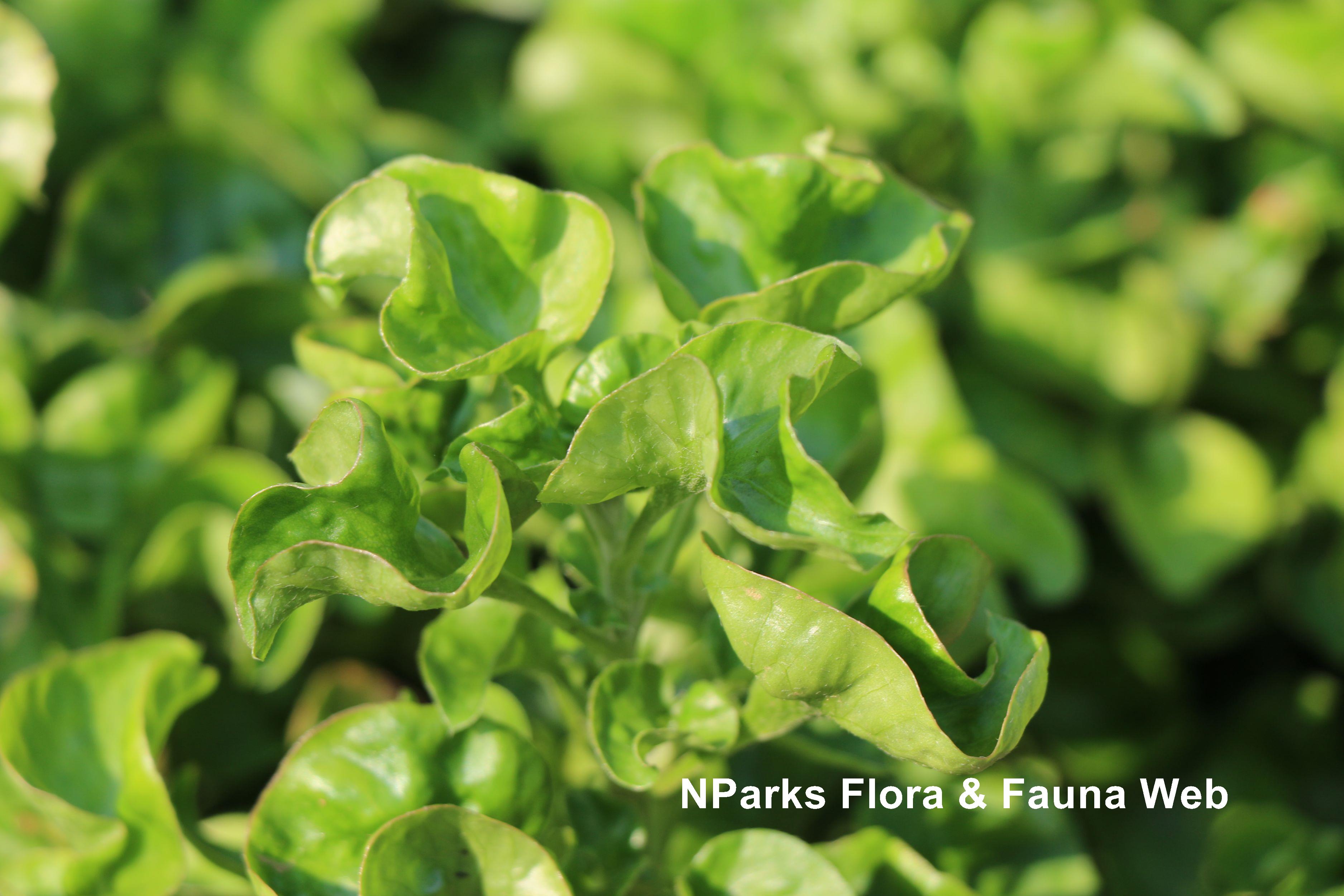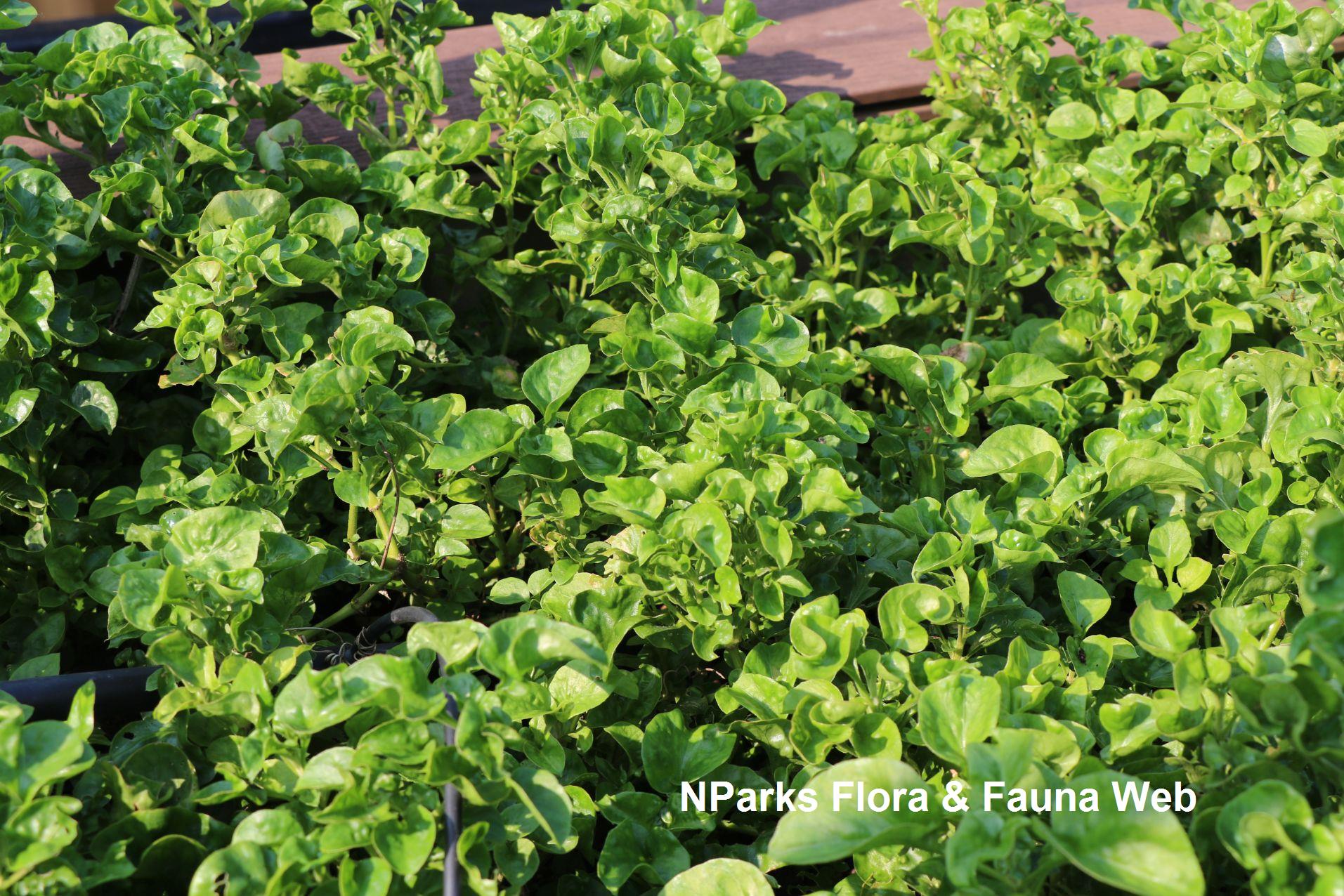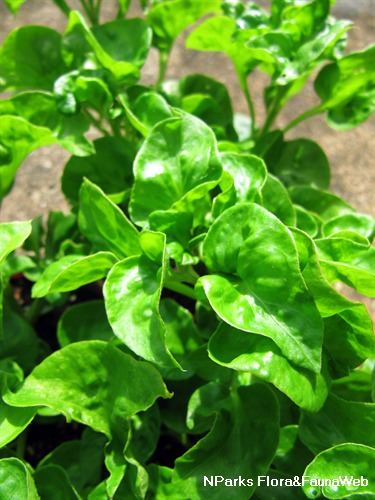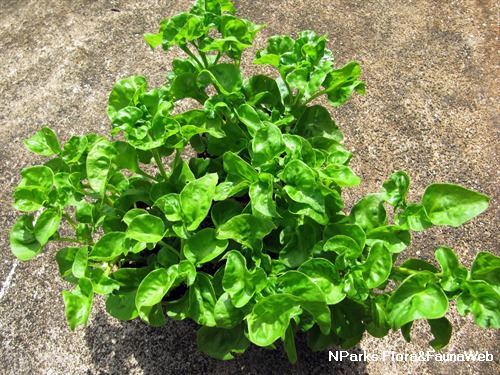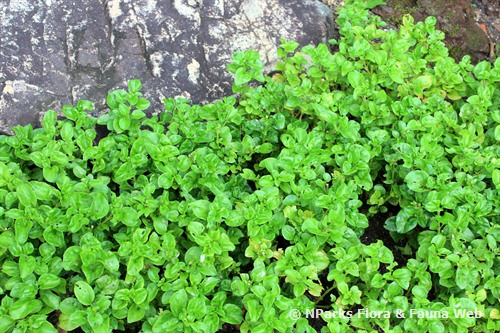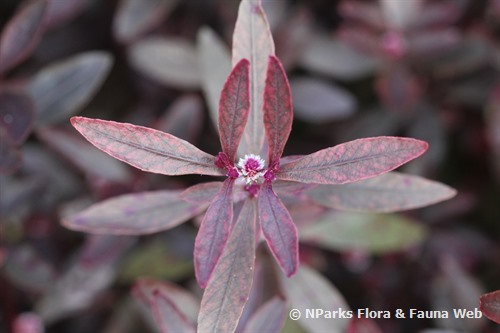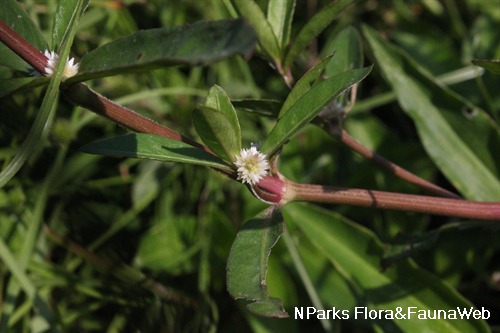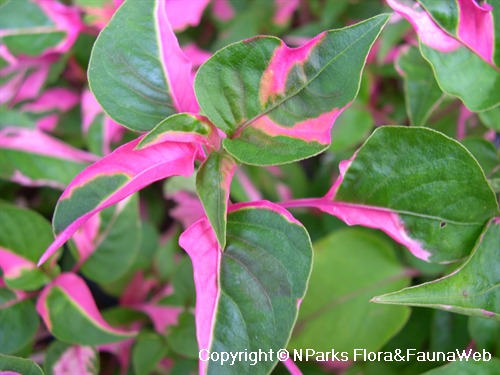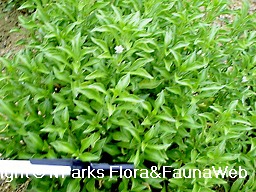.jpg)
Back
Alternanthera 'Sissoo'
| Family Name: | Amaranthaceae |
| Common Name: | Brazil Spinach, Sabu Spinach, Samba Lettuce, Sissoo Spinach |
Name
Classifications and Characteristics
| Plant Division | Angiosperms (Flowering Seed Plants) (Dicotyledon) |
|---|---|
| Plant Growth Form | Herbaceous Plant |
| Lifespan (in Singapore) | Perennial |
| Mode of Nutrition | Autotrophic |
| Maximum Height | 0.3 m |
| Maximum Plant Spread / Crown Width | 0.5 m to 1 m |
Biogeography
| Local Conservation Status | Non-native (Horticultural / Cultivated Only) |
|---|
Description and Ethnobotany
| Growth Form | Forms a dense mound up to 0.3 m tall. |
|---|---|
| Foliage | Medium green, glossy leaves are heart-shaped with a wrinkled leaf texture. |
| Stems | The stem forms roots at the nodes. |
| Fruit | The seeds produced are typically not viable. |
| Taxonomy | This cultivar is sometimes referred to as Alternanthera sissoo in the horticultural trade. Major plant taxonomic databases have classified Alternanthera sissoo Velde as a synonym of Alternanthera sessilis <1>. As the cultivar's characteristics are significantly different from that of Alternanthera sessilis, only the genus Alternanthera has been used in the scientific name (Nigel Taylor, pers. comm.). |
| Cultivation | This plant requires soil with high organic matter content and should be fertilized with a high nitrogen feed. It grows best at about 50% shade, having fewer pest problems. Typical pests are caterpillars and slugs. |
| Ethnobotanical Uses | Edible Plant Parts : Edible Leaves Food (Fruit or Vegetable): In Brazil, the leaves are often eaten raw as part of a salad. The leaves should be cooked if consumed in large quantity, because they contain oxalic acid. The flavour is usually mild, but some cultivars have a slightly bitter taste. Others: It can be inter-cropped with other vegetables, because it forms a dense mat of edible leaves which can prevent weeds from becoming established. |
Landscaping Features
| Landscape Uses | Groundcover |
|---|---|
| Thematic Landscaping | Economic Garden |
| Usage Hazard - Cons Remarks | The leaves should not be consumed raw in large quantities due to the presence of oxalic acid. |
Plant Care and Propagation
| Light Preference | Semi-Shade |
|---|---|
| Water Preference | Lots of Water |
| Plant Growth Rate | Fast |
| Rootzone Tolerance | Moist Soils, Well-Drained Soils |
| Pest(s) | Chewing Insects |
| Propagation Method | Stem Cutting |
Foliar
| Foliage Retention | Evergreen |
|---|---|
| Mature Foliage Colour(s) | Green |
| Mature Foliage Texture(s) | Crinkled / Twisted |
| Foliar Type | Simple / Unifoliate |
| Foliar Shape(s) | Non-Palm Foliage (Cordate) |
| Foliar Venation | Pinnate / Net |
| Foliar Margin | Entire - Wavy / Undulate |
| Foliar Apex - Tip | Acute |
| Foliar Base | Cordate |
References
| References | <1> Alternanthera sissoo Velde in GBIF Secretariat (2023). GBIF Backbone Taxonomy. Checklist dataset https://doi.org/10.15468/39omei accessed via GBIF.org on 5 May 2025. <2> Toensmeier, E.. 2007. Perennial Vegetables: From Artichokes to Zuiki Taro. Chelsea Green Publishing. 224 pp.
|
|---|
Image Repository
Others
| Master ID | 31971 |
|---|---|
| Species ID | 6373 |
| Flora Disclaimer | The information in this website has been compiled from reliable sources, such as reference works on medicinal plants. It is not a substitute for medical advice or treatment and NParks does not purport to provide any medical advice. Readers should always consult his/her physician before using or consuming a plant for medicinal purposes. |

